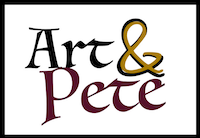
Posted
November 27, 2019 13:37:03
Related Story:
How my hack could change multiplication forever
Two Australian musicians are hoping to revolutionise the way people study music theory, while getting kids away from screens.
Key points:A pair of musicians hope a new card game they’ve created will get kids and families away from the screenThe game was designed to teach musical theory, but also to help keep minds sharp and encourage socialisingThe creators hope the game, which they spent 900 hours developing, will be rolled out into schools across the country
Growing up in a family who owned a toy store, Brisbane musician Stace Callaghan knew that one day she would create a game.
After meeting fellow musician Liv Cosham, the duo came up with an idea to help people learn music theory.
“We were playing handpans together and Liv tried to explain chord progressions to me and I couldn’t get it. Then we had a eureka moment and knew we had to find a way to simplify it, ” Ms Callaghan said.
“The next day we were at an office supplies store buying plain white cards, writing out chords.”
Building a card game
Within a day of coming up with the idea the pair had a prototype ready to go, but it would take more than 900 hours to get the game designed and completed.
They tested out it out on friends and family and did numerous designs to get the game built.
Ms Cosham was finishing a degree in music psychology, which provided them with the education tools needed to produce the game.
What resulted was Oom-Pah which, when played solo, is similar to Patience, and when played with multiple players is similar to the classic card game Speed as players build music sequences with cards.
“Each person builds a chord progression, intervals or scale in an ascending order in various keys,” Ms Cosham said.

Photo:
One of the prototype sketches used to create the game. (Supplied: The Joy Dispensary)
“At the same time you build descending scales, making it great for the brain as it accesses neural pathways similar to what you use playing an instrument.
“Part of the game also involves a key learning table that looks similar to a periodic table with a stencil that sits over the top.”
Making cards cool
Along with teaching music theory, one of the aims of the game was to get children off screens and learning with their hands while bringing families together.
“We want to get people to interact socially again and get them to put down their phones and play a cool old-school card game,” Ms Cosham said.
How to play the game Oom-Pah
Ms Callaghan said the game had proven popular with people of all ages and interests.
“It has the potential to be the sudoku or crossword for music theory,” she said.
“We took the game to [game convention] PAX, in Melbourne, and it was so popular security had to ask classically trained musicians to leave the stand because it was time to go home.”
The game was created also to help people with their memory.
“We want people to keep their brains active. My grandmother had dementia and Stace’s mum has dementia, so it’s important for us to teach people how to keep their brain working,” Ms Cosham said.
“The colours of the cards, along with playing with shapes and developing a ‘hands-on’ learning tool with the maths behind it, enabled us to combine education tools together, which is fun.”
How to name a card game
The duo said naming the game was like naming a child.
“It ended up coming from a massage client of mine,” Ms Cosham said.
“We rattled around a few names and she said ‘What about Oom-Pah?’, and it sort of stuck.
“It does also feel awesome to call out ‘Oom-Pah’ when you win a round.”
The duo has the game on a crowdfunding website, with the hope of distributing it into primary and high schools across the country.
“Our ultimate goal is to revolutionise the way music theory is taught and played,” Ms Cosham said.
“We’ve recently been invited to run a tournament with UQ’s music facility and international music master’s students — it’s become like a spelling bee, but for music.”
Topics:









